Last Updated on November 15, 2025 by Emma Fajcz | Published: September 4, 2020
Coffee is a loved and celebrated drink in every corner of the world. From coffee in Spain, to coffee in Italy to coffee in France, and everywhere in between, you’ll find bustling coffee scenes.
Coffee comes in various forms—black, milky, iced, or steaming hot—and the way it’s enjoyed varies across cultures.
Read along to discover all things coffee in Spain, including its history, classic drinks, and local ordering tips. ¡Vamos!
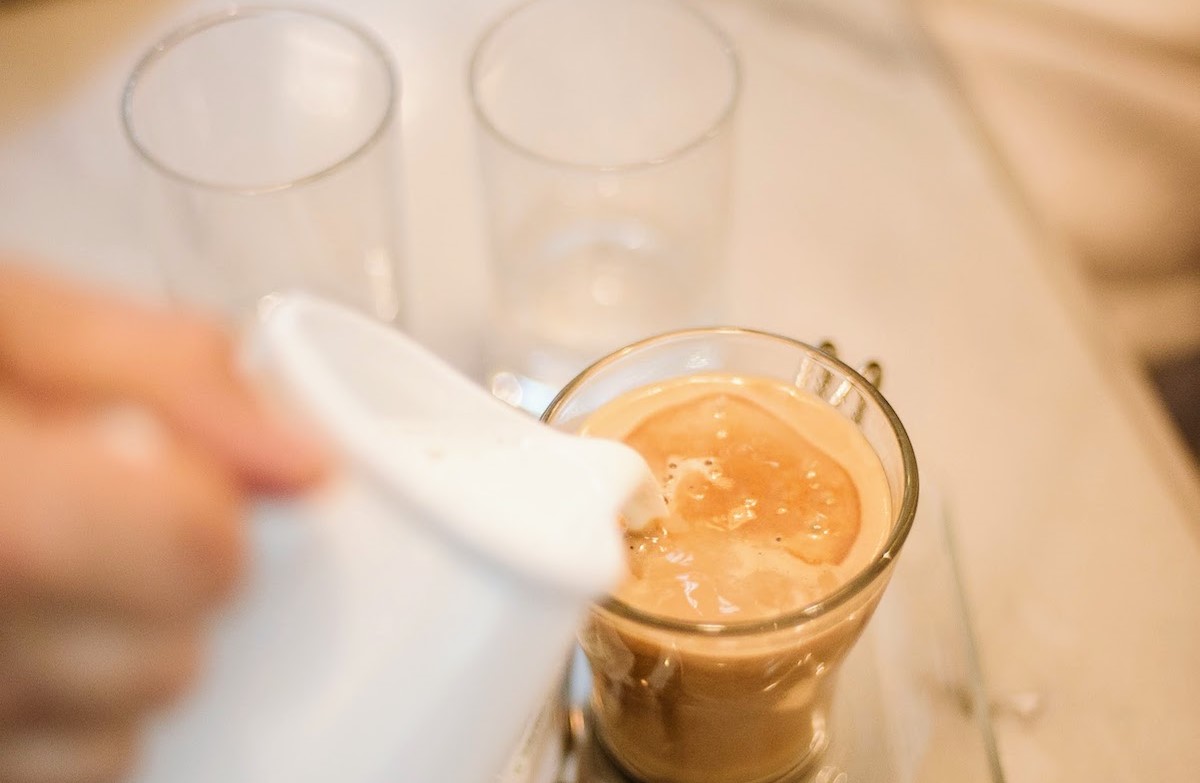
Coffee in Spain 101
In Spain, the espresso brewing method is the most popular way to prepare coffee in Spain. This method forces extremely hot, pressurized water through finely ground coffee beans, resulting in a stronger flavor in a smaller amount of coffee. As a result, coffee brewed in this manner is often referred to as espresso.
Most Spanish coffee might taste more bitter than you’re used to, which can be attributed to the torrefacto method of preserving roasted coffee beans. The story of torrefacto is especially interesting, and linked to the Spanish Civil War. If you’re looking for non-torrefacto coffee in Madrid, head to a specialty coffee shop. But if you just want a regular cup of joe, you can get one in most every bar and restaurant.
A quintessential coffee order in Spain is the café con leche or cortado. These classics feature espresso and milk, with the main distinction being the size and milk-to-espresso ratio. Here, sugar isn’t typically added to these drinks during preparation. Instead, you’ll receive packets of sugar to sweeten your coffee to your liking.
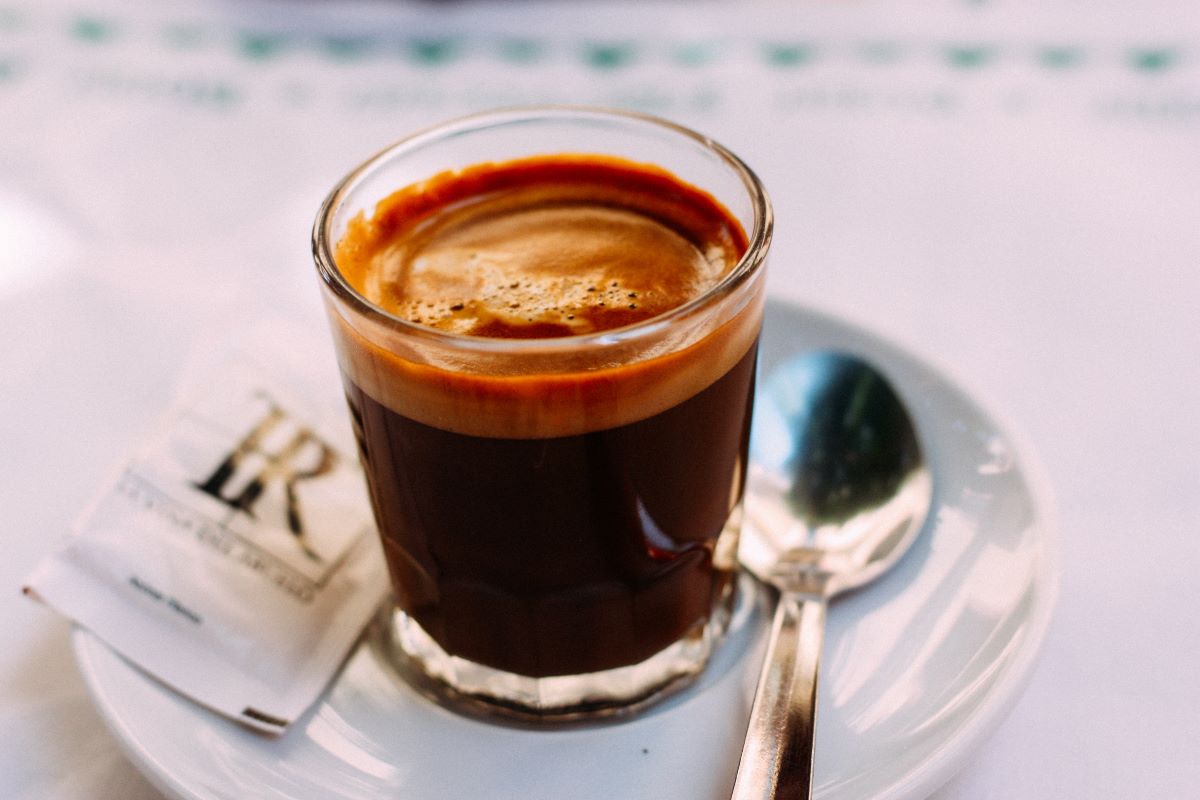
Specialty coffee in Spain
Coffee in Spain no longer just means bitter, torrefacto-esque coffee. Over the last decade, the country has seen their specialty coffee scene grow significantly. Artisanal coffee shops and roasters have emerged all over the place, working with high-quality beans from around the world and crafting delicious (and beautiful) cups of joe.
Spain’s specialty coffee movement reflects a growing appreciation for the complexity of coffee flavors and a commitment to elevating the coffee-drinking experience to a new level of sophistication.
If you’re heading to the Spanish capital and you’re a coffee lover, then don’t miss our guide to specialty coffee in Madrid.
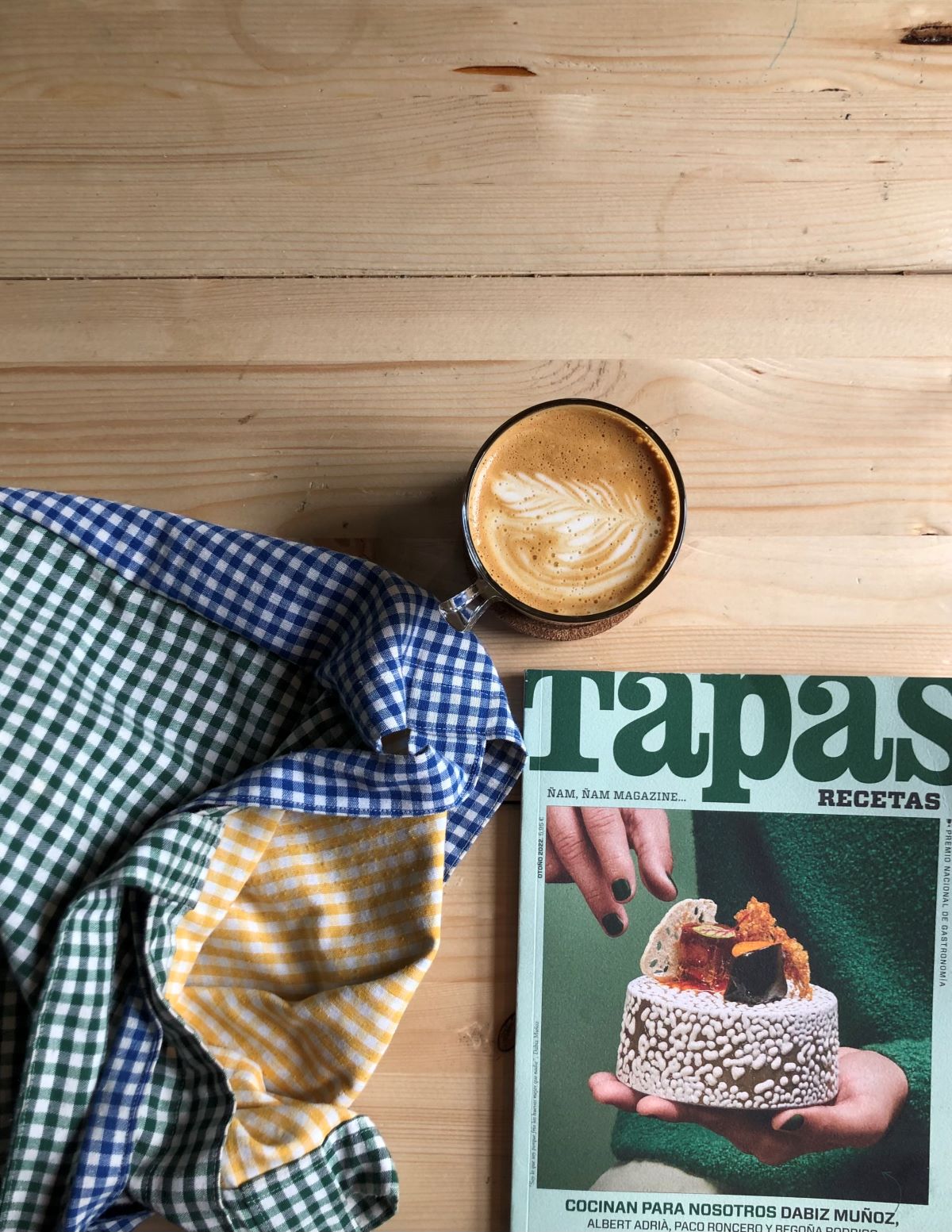
Decaffeinated coffee in Spain
Fresh decaffeinated coffee isn’t very popular in Spain, and many cafes may only have it in instant form. If you order a café descafeinado de sobre, you’ll receive a cup of hot milk and a packet of instant decaf coffee.
However, some cafes offer descafeinado de máquina (machine-brewed decaf coffee). If it’s available, decide how you would like your coffee served, and be sure to clarify that you want it prepared with decaf coffee.
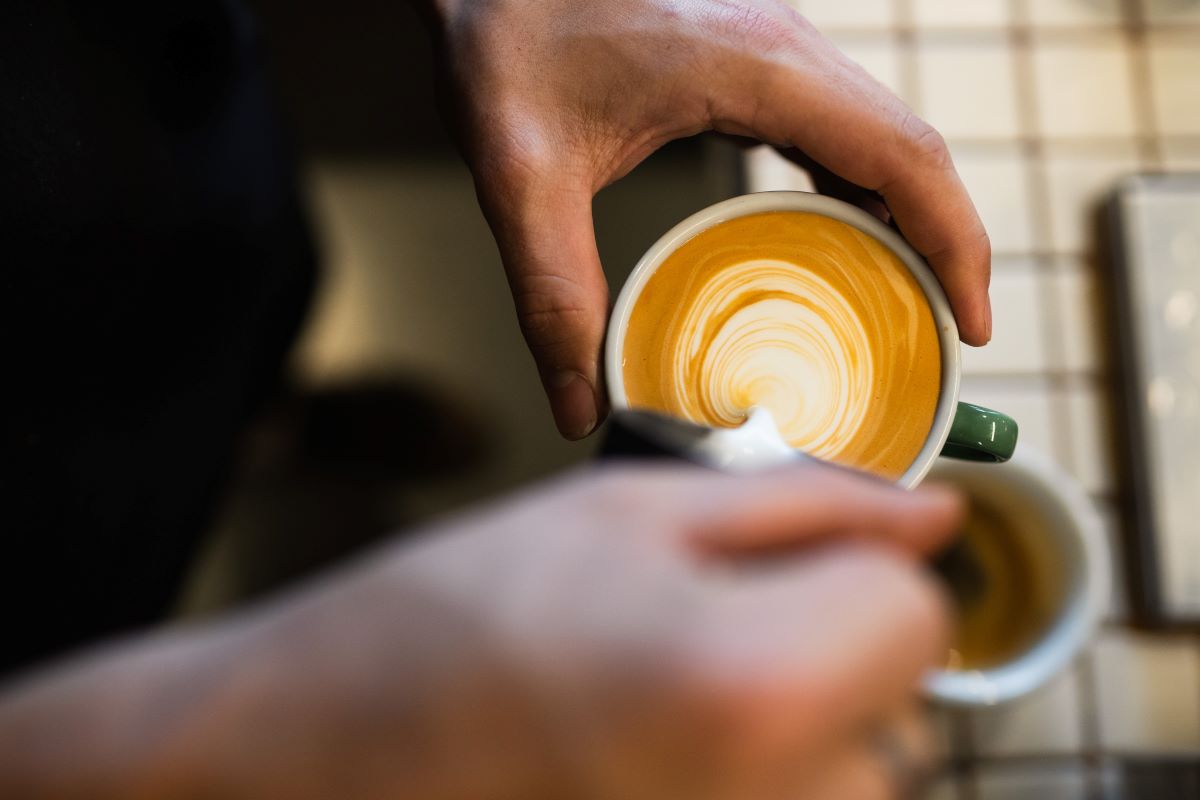
How to order coffee in Spain
To become a coffee-ordering pro in Spain, it’s essential to grasp a few key details. This includes understanding the names and meanings of different coffee drinks, the various serving styles, and those subtle details that can significantly enhance your coffee experience.
Coffee with little or no milk
- Café solo: A small cup of strong, black espresso.
- Café americano: If the intensity of a café solo is especially strong, try a café americano. This Spanish coffee drink contains the same amount of caffeine as a café solo but with more water, resulting in a milder flavor.
- Café cortado: A small cup of espresso with just a splash of milk. The Spanish word cortado means “cut,” so think of it as coffee “cut” with a small amount of milk.
- Café con hielo: This summertime favorite is simply coffee with ice. It comes with two glasses: one containing black espresso and another containing ice cubes. To enjoy, add sugar to your liking, stir to dissolve the sugar in the hot coffee, and pour your coffee over the ice—it’s harder than it sounds, but perfectly refreshing on a sweltering summer day!
- Carajillo: Interestingly, this coffee order doesn’t have a drop of milk—instead, it has alcohol! A carajillo is espresso served with rum, whisky or brandy.
Coffee with a lot of milk
- Café con leche: A coffee drink prepared with equal parts espresso and milk. Sometimes when you order this, the waiter may ask if you want hot or cold milk. If you’re in a bit of a hurry and can’t wait for the steamed milk to cool, you can ask for leche fría o leche templada (cold or lukewarm milk). More on that below!
- Manchado or leche manchada: Literally translating to “stained” (or “stained milk”), this drink consists of mainly warm milk “stained” with a splash of coffee. It’s a great option for the afternoon if you’re craving coffee but don’t want to be up all night.
- Café bombón: Espresso with sweetened condensed milk. An especially great choice for those with a sweet tooth!
Essential Spanish coffee vocab
Aside from knowing the names of the drinks that you want to order, there are also some other key phrases you’ll want to have in your back pocket.
How you’d like your milk:
- Caliente: Hot, steamed milk
- Fría: Cold milk
- Templada: A mix of hot and cold milk
What type of glass you’d like to drink out of:
- Taza: A mug with a handle
- Vaso: A small clear glass with no handle. Most traditional bars in Spain will serve coffee this way.
Where you’d like to have your drink:
- Para (tomar) aquí: To drink it here
- Para llevar: To take it to go
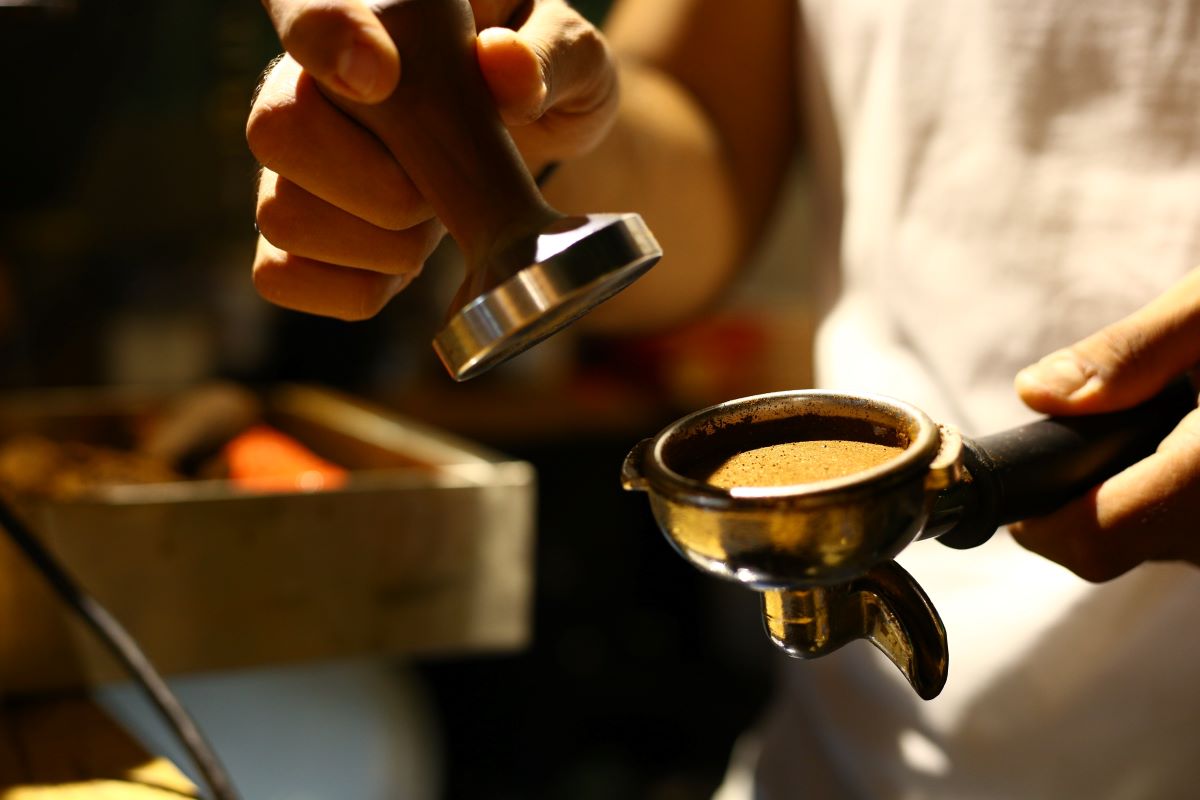
An overview: Coffee in Spain FAQs
What kind of coffee is popular in Spain?
The most popular Spanish coffee drink is the café con leche, made with half espresso and half milk. Other common options are café solo (black coffee; a straight shot of espresso with no milk) as well as café cortado (espresso with just a splash of milk).
How do you order iced coffee in Spanish?
If you’re craving iced coffee, ask for café con hielo. Your server will bring you a glass of coffee and a separate glass of ice cubes. You’ll need to pour the coffee (after adding your desired amount of sugar) over the ice yourself—a bit of a DIY approach!
Where do Spaniards typically drink coffee?
In Spain, many people will start the day with a quick cup of coffee at home before heading out for the day. Around 10–11 a.m., Spaniards head out to their nearest café or bar for a bite to eat and another cup of coffee. Some people will also enjoy coffee at a restaurant after lunch, or again at a café in the afternoon for merienda around 5–6 p.m.
What do Spanish people eat with coffee?
In the morning, many Spaniards will have coffee with breakfast. This can be anything from a slice of toasted bread topped with olive oil, fresh crushed tomato, and ham; a slice of potato omelet; or a sweet pastry. Coffee is also commonly enjoyed with or in place of dessert in Spain—never as part of the main meal!
Why is Spanish coffee so bitter?
Many traditional cafés in Spain still serve coffee made with the torrefacto method. Popularized during the Spanish Civil War as a way to stretch the already thin coffee supply, torrefacto involves adding sugar to the beans during the final step of the roasting process. The high temperatures burn the sugar onto the beans, giving them a distinctly bitter taste.
Is café con leche the same as a latte?
Both drinks are similar in that they’re made with coffee and quite a bit of milk. However, lattes have slightly more milk than cafés con leche, and are also topped with a bit of foam.
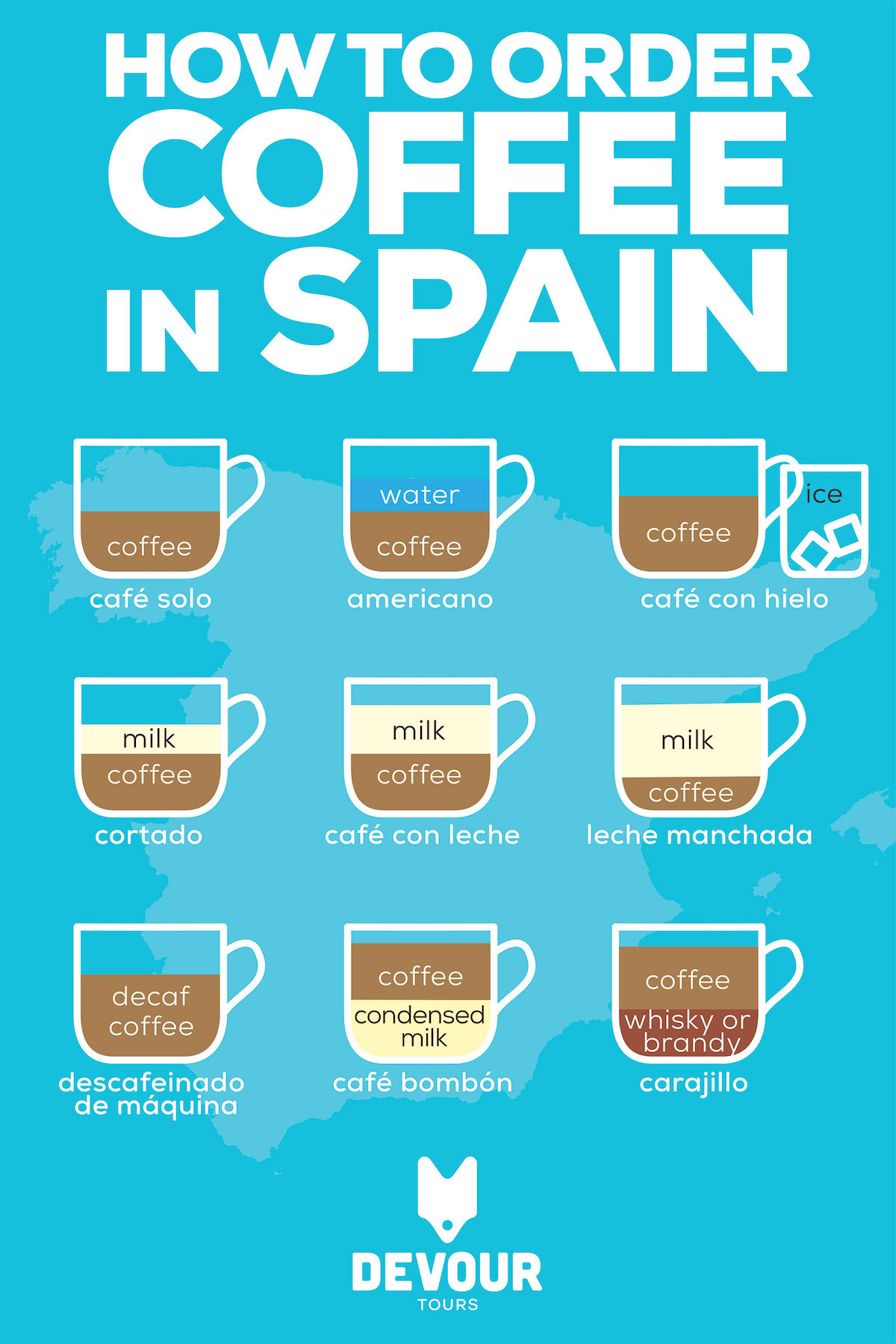
Want to drink coffee like a local in one of Madrid’s most fascinating historic pastry shops? On our Ultimate Spanish Cuisine Tour, your guide will break down some of Spain’s most popular coffee drinks so you can choose the perfect option to pair with a traditional sweet treat.
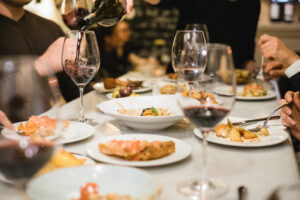
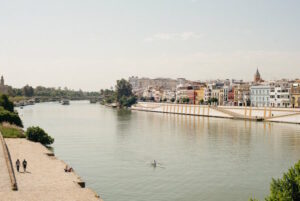
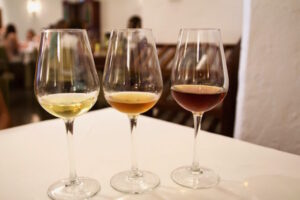






Expresso machiato equivalent in Palma please ?
Hi Sam! Thanks for the question! We’d say a cafe cortado is going to be the best fit! It might have less foam, but the milk-to-espresso ratio is the most similar!
Hey! I would more useful in you added how to say hot and cold in Spanish. Especially here:
Sometimes when you order this, the waiter may ask if you want hot or cold milk.
Many thanks! 🙂
Hi Kirill! Thanks for your suggestion! The word for cold in this case would be fría, and the word for hot would be caliente! Hope that helps!
Great article! I know what I like and now I know how to ask for it.
Another unusual feature of coffee in Spain is their habit of adding sugar to the beans while roasting (Torrefacción). If you search online you’ll find articles complaining about how it ruins the coffee, but other people (including me) rather like it. Apparently the practice is routine in Spain and Portugal, but not even legal elsewhere in the EU.
This is the reason for the words ‘Torrefacto’, ‘Natural’ and ‘Mezcla’ on bags of coffee beans in Spain.
So true, Richard, and such an interesting bit of Spanish history that affects how we drink our coffee today. Those who don’t like the bitter torrefacto taste will have to head to specialty coffee shops.
Hola team.
We are opening a cafe in brisbane and were just talking about spanish style coffee.
Gracias
Pretty sure that you guys could teach us a thing or two about good coffee!
Let me know where you are opening in Brisbane. My Dutch daughter in law has specialised making and serving coffee for years and her employers’ just closed due to re-development. At the least she’d love to try yours!
Haha Melbourne has the best coffee, Brisbane can be hit and miss
Nice post … How would you describe a strong, black coffee with nothing added? Maybe bitter, but not too bitter.
Café solo is coffee with nothing added! The bitterness will depend on the beans and how they are preserved and roasted. Spanish coffee is often bitter due to the torrefacto method of preserving beans that we mentioned.
How do you order a double espresso in Spanish? Everytime I try to order an espresso doble, or cade doble, and then I recieve a ristretto
Hmmm that’s very strange! Un café doble should do the trick. There might be some confusion with the espresso doble, so maybe avoid that one.
Cafe solo largo fuerte should .get you a double expresso. Works for me!
Hola! My Mother is Madrileña & I Grew Up Spending Time With Family All Over Spain & Europe. As Children, We’re Given Leche Manchada & “Graduate” To Café Con Leche. Early On, We Develop A Love Affair With Café lol. My Fave Is & Will Always Be Café Cortado But When I’m Feening For A Rich Espresso, My Go To Is A Simple, Sweet, Dark Café Solo. Olé
Thanks for your comment Verónika! What a beautiful coffee love story 🙂 Thanks for sharing it with us!
Hello! Carajillo is made with Licor 43 as opposed to brandy and whiskey. It is a sweet liquer often used as a digestif.
Hi Jorge! Like most things in Spain, this probably varies by region. Wikipedia suggests that Licor 43 is popular in carajillos in Cartagena. Thanks for your comment!
Hello – we have guests coming to our corporate office from spain and we were told they like brown sugar in their espresso. Is this raw cane sugar or actually brown sugar?
Hi Sara! Raw cane sugar. “Real” brown sugar like we use to bake with in the US is actually pretty hard to find in Spain.
Hi. How can I order flat white in Spain?Is cortado would be the same?
Hey Randa! At specialty cafes you can order a flat white, and at normal bars a café con leche is the closest.
Some say taste is relative but torrefacto coffee is horrendous. It tastes like yesterdays wine steeped with cigarette butts. The claim that it is conservation method is rubbish. In Spain, it is still used to mask the taste of the low quality robusta coffees used and as an excuse to add 20%+ weight in sugar to increase profits at the expense of consumers. There is a reason this practice is banned in some coutries: it’s a scam.
Thanks for reading, Eric—torrefacto coffee definitely isn’t for everyone. Here are some great places to find specialty coffee here in Madrid if that’s more your style: https://madridfoodtour.com/coffee-in-madrid/
I’m going to Madrid soon and I think I’ll fit in pretty well because I don’t like sweetness in my coffee anyway! In most cafes are all drinks based on espresso or is it easy to find drip coffee too?
Hi Alice! Most traditional cafes in Spain serve mainly espresso-based drinks, but some specialty coffee shops do serve drip coffee. You can find V60 drip at Hola Coffee and Toma Café (both of which roast their own), as well as The Fix, Ruda Cafe and ACID. We hope this helps—enjoy Madrid!
Is it possible to get a bigger cup of ordinary coffee (cafe con leche) in Spain?
Hi Brendan—most traditional cafes here in Spain serve coffee in smaller portions than in other countries. However, some specialty cafes do serve larger amounts. Unfortunately, most cafes generally don’t serve varying sizes, unless it’s a chain. We hope this helps!
I am traveling through Spain now. How do I order my coffee to go?
Thanks
Hi there! While to-go coffee isn’t available at all cafes in Spain, you can ask for “café para llevar.” Some places may be able to accommodate you by pouring it into a disposable cup. We hope this helps—happy traveling!
In New Zealand a ‘Long Black’ coffee is a shot of hot water then a shot of espresso – in that order. Is such a thing possible in Spain?
Hi Philip! You can order a long black at most specialty coffee shops!
What a wonderful post! Thank you! Heading for Spain at the end of summer and this will be a great help. Now, what about tea? (For my husband)
Thanks for reading, Margaret—we’re glad to hear you found the post helpful! Many cafes will have a tea menu, which you can ask for by saying, “Hay carta de tés e infusiones?” If they don’t have one, many cafés will at least have black tea (té negro), green tea (té verde), red tea (té rojo), and chamomile (manzanilla). You can see some of our recommendations for tea rooms in Madrid here (these places will have a wider selection): https://madridfoodtour.com/trendy-cafes-and-tea-rooms-in-madrid/
Excellent post! I love coffee!
Thanks for reading!
I prefer a manchado. I believe this is a ‘stain’ of coffee. Mostly lots of lovely steamed skimmed milk. Spanish coffee, for me, is very strong and only for mornings but a manchado is ok for an afternoon hot beverage.
You’re right, Chris—”manchado” literally means “stained” in Spanish! Coffee here in Spain can definitely take some getting used to, but we like the way you think—a manchado is perfect for something lighter in the afternoon, especially if you don’t want to drink as much caffeine later in the day.
excellent post
Thank you so much!
Huge coffee drinker and ice cream lover. I might end up having them side by side.
lol
Sounds like a match made in heaven!
Are cappuccinos common in Spain, and how do I ask for one?
Good question, Cate—not all traditional cafes will serve cappuccinos, but they’re becoming more common throughout Spain. Just ask for “un capuchino, por favor”!
Thank you! Now I now how to order coffee when I will in Spain
Happy to help! Thanks for reading 🙂
I believe this is a ‘stain’ of coffee. Mostly lots of lovely steamed skimmed milk. Spanish coffee, for me, is very strong and only for mornings but a manchado is ok for an afternoon hot beverage.
Correct! “Manchada” literally means “stained” because the milk is “stained” with a splash of coffee—and it is a perfect low-caffeine option for the afternoon!
One of my pals runs a hookah & coffee place in Valencia. Now I know what to do when I get to visit them 🙂 “Get loose of your weird accent first” his wife would say to me ahahah. Thanks for the guide!
Thanks for reading! 🙂